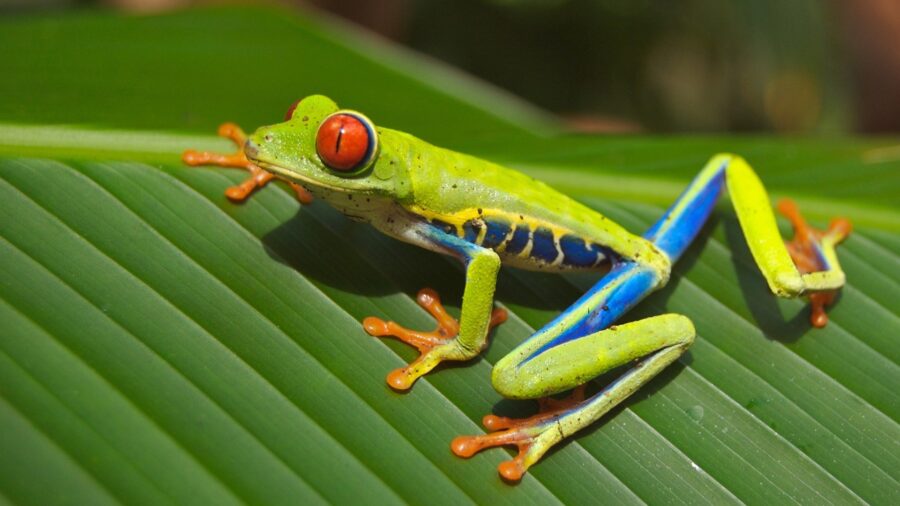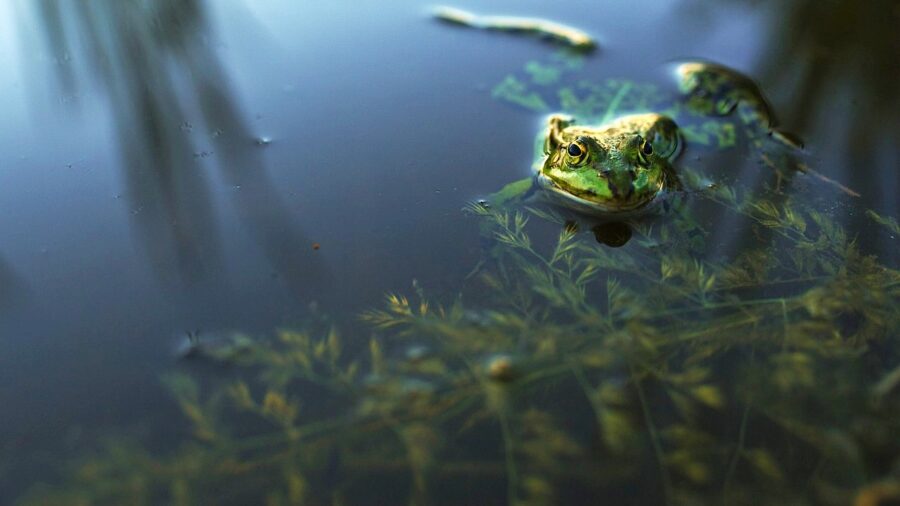Scientists Are Worried One Specific Animal Going Extinct Due To Climate Change

According to new research recently published in the scientific journal Nature, one of the many damaging effects of climate change is the growing extinction of amphibians. From toads and frogs to salamanders and axolotls, thousands of amphibian species are increasingly threatened with extinction due to climate change and the continued depletion of their habitats. The Nature study reports that, worldwide, some 2,900 amphibian species, making up 41 percent of all amphibians, are “globally endangered,” which means that they are critically endangered, endangered, or vulnerable.
A new study reveals a drastic increase in the amount of amphibians that are either endangered or threatened.
Such widespread endangerment of amphibians is now 3% greater than it was in 1980, with no signs of stopping or slowing down in sight. The researchers who conducted this latest study worked from data compiled by the Global Amphibian Assessment, one of the broadest and most complete amphibian health surveys available. The Global Amphibian Assessment collected research data regarding more than 8,000 species and confirms that among vertebrates, amphibians are the world’s most threatened class of animals.
As if that weren’t enough, the skin disease chytridiomycosis is spreading quickly throughout amphibian populations, interfering with both hydration and breathing
The study’s lead author, Kelsey Neam, who works with the environmental group Re:wild, said in an interview with NBC News that quickly changing climate conditions continually force amphibians to adapt to their changing environment or find new habitats in other areas. Often, the animals’ adaptations cannot keep pace with the environmental changes around them, and the fragmentation of their habitats due to deforestation and environmental destruction presents great challenges that make it difficult for the animals to move from one area to another.

Ironically, it is one of amphibians’ adaptations for survival that makes them more vulnerable, as their permeable skin allows them to live both in water and on land but also leads them to more easily absorb pollutants and quickly dehydrate in higher temperatures.
Amphibians also need both water and land in their habitat environments, meaning that storms, droughts, and floods, along with changes in sea levels, temperature changes, and fires, threaten their survival from multiple directions. Agriculture, however, continues to be the primary factor threatening the survival of amphibians worldwide as it is the primary source of habitat destruction. Estimates suggest that over three-quarters of the endangered amphibian species owe their plight to agriculture.
Ironically, it is one of amphibians’ adaptations for survival that makes them more vulnerable, as their permeable skin allows them to live both in water and on land but also leads them to more easily absorb pollutants and quickly dehydrate in higher temperatures.
Still, climate change is clearly having a large negative impact on the survival of amphibians, exacerbating already challenging conditions while creating entirely new ones. As if that weren’t enough, the skin disease chytridiomycosis is spreading quickly throughout amphibian populations, interfering with both hydration and breathing. The debilitating disease is especially prevalent among frog populations and is greatly exacerbated by climate change.
The effects of climate change that harm amphibians’ skin make them more susceptible to skin disease and other pathogens. According to University of Washington biologist Adam Leaché, nostalgia about the “good ol’ days” of research is common among frog experts. If more is not done to stop the destruction of habitats, the incursion of agriculture, and the deleterious effects of climate change, more amphibian species will continue to go extinct.











